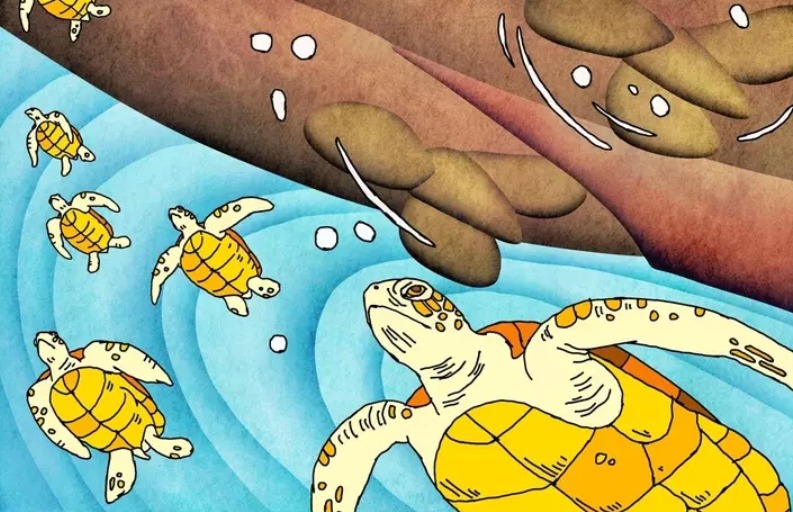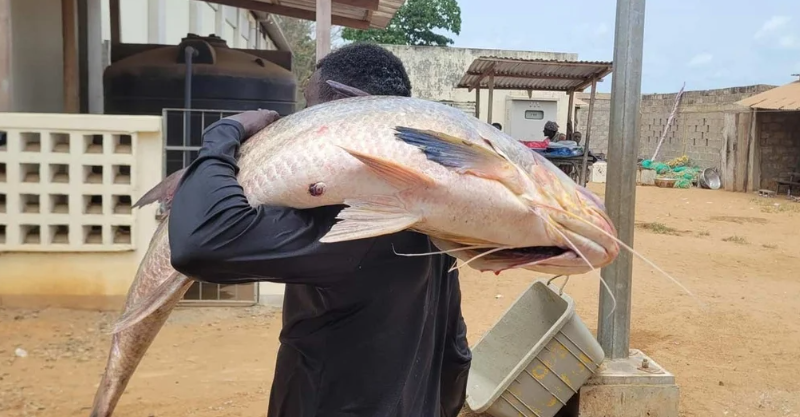As ocean waters warm, sea turtles are being forced to migrate to cooler areas that are often congested with maritime traffic—putting them at high risk of fatal collisions.
Imagine this: climate change renders your home uninhabitable, forcing you to move to a cooler region. After a long journey, you arrive in a more welcoming place. But just as you begin to settle in, you realize your new home sits in the middle of a busy highway—and suddenly, a speeding car smashes into you.
That’s essentially what’s happening to sea turtles, according to a study published on June 25 in Science Advances. If greenhouse gas emissions continue along the “worst-case scenario” pathway (SSP5-8.5) as outlined by the Intergovernmental Panel on Climate Change (IPCC), over 50% of key sea turtle habitats could disappear by 2050, the authors warn. This shift is expected to push turtles into cooler waters that also happen to be crowded with ships—drastically increasing the risk of deadly collisions.
“Climate change is forcing sea turtles to adapt,” explains Denis Fournier, a researcher with the Belgian National Fund for Scientific Research (FNRS) at the Université libre de Bruxelles and co-author of the study. “But they’re adapting by heading straight into danger—right into shipping lanes.” Fournier and his PhD student Édouard Duquesne reached this conclusion by analyzing data on maritime traffic, turtle distribution, and projected climate-induced shifts in habitat.
By 2100, sea turtles are expected to abandon tropical waters for cooler regions with intense marine activity—such as the North Sea and the Mediterranean in Europe, and the East China Sea and the Sea of Japan in Asia. In these areas, turtles will face constant threats from the propellers of cargo ships, container vessels, and recreational boats.
Population Collapse Underway
“When turtles forage, they swim near the surface,” Fournier explains. “If ships are moving quickly, they don’t see them—and collisions occur.” The scale of such accidents is hard to assess, as most carcasses sink to the seafloor. However, when turtles return to nest, scientists often observe evidence of human-caused injuries: amputated flippers, deep scars on their shells…
In the Mediterranean, the Galápagos Islands, and the Atlantic off the U.S. coast, ship strikes are a leading cause of sea turtle population decline. In Florida, they’re even the primary cause of turtle mortality. And the threat is growing: globally, recreational boating is projected to increase by 5% per year until 2030, while commercial shipping traffic has quadrupled since 1992.
“When sea turtles thrive, ecosystems thrive — and vice versa.”
Sea turtles aren’t alone in facing this danger. A study published in Nature Climate Change in October 2024 showed that whale sharks—classified as “endangered” by the IUCN—are also being driven from tropical waters toward high-traffic shipping zones. By 2100, they could be 15,000 times more likely to be struck by ships.
Sea turtles are already in critical condition: 6 out of 7 species are listed as “vulnerable,” “endangered,” or “critically endangered” by the IUCN.
Yet they play a vital ecological role, Fournier emphasizes. As prey, they feed species like sharks. As predators, they help control jellyfish populations and maintain seagrass ecosystems. Their feces also contribute to nutrient recycling in the oceans. “They’re bioindicator species. When they’re doing well, the whole ecosystem is doing well.”
Solutions Exist—They Just Need Implementation
The good news: action is possible, says Fournier. One promising idea is the creation of mobile marine protected areas, whose boundaries can shift based on turtle presence. Equipping turtles with GPS trackers could help scientists better monitor their movements and seasonal patterns.
Another strategy: slowing ships down in zones where vulnerable species are present. In Canada’s Gulf of St. Lawrence, reduced speed limits have been enforced to protect belugas, minke whales, and fin whales. Most commercial vessels travel between 13 and 20 knots (24–37 km/h), but a study published in Frontiers in Marine Science in 2019 showed that reducing speed by just 10% could cut collision risk in half. At 10 knots, the danger drops significantly. Yet fewer than 10% of ships operate at this speed.
Even more effective: banning ship traffic altogether in critical habitats. Near the Pacific entrance of the Panama Canal, a traffic separation scheme was introduced to limit overlap between shipping routes and whale migration corridors. But such systems remain rare globally.
“There are solutions,” Fournier insists. “We just need to implement them—and reduce our pressure on the sea.”



